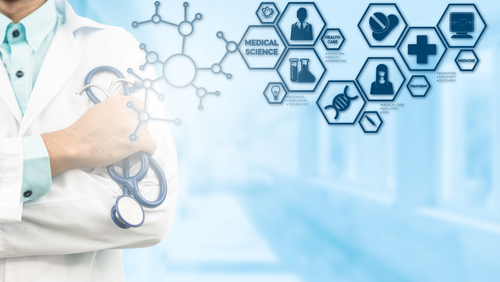Health Data Science Degrees Include These Five Essential Classes
- Introduction to Epidemiology
- Basics of Statistical Inference
- Computing for Big Data
- Survey Design
- Medical Informatics
A person interested in health, science, and computing should be aware of these essential five courses in a health data science degree program. This type of degree may be a bachelor’s or master’s degree. At the master’s degree level, most universities require that the student has a bachelor’s degree in a field such as computer science, mathematics, statistics, public health or a related field of expertise.

Related resource: Top 20 Health Data Science Degrees
1. Introduction to Epidemiology
A basic epidemiology class is usually required for a health data science degree. Epidemiology involves studying the distribution of diseases, illness, and injuries of people. It includes cohort and case-control studies, risk factors of disease or injury, interviewing patients, collecting and analyzing data, designing surveys and understanding bias in sample design and survey responses. Some health data scientists are classified as epidemiologists.
2. Basics of Statistical Inference
A health data scientist needs to have a thorough understanding of statistical methods. One of the first five courses in a health data science degree program will be a basic class on statistical inference. This includes tests of significance, variation, random sampling, characteristics of a population, sampling methods and techniques, testing hypotheses and deriving estimates. It also includes measuring the uncertainty in an estimate.
3. Computing for Big Data
Health data science uses a lot of big data computing methods. In this course, students would learn about databases, organizing data, keeping data secure, developing algorithms and verifying the soundness of the data. This type of class would also include an introduction to different types of software used in the analysis of health data, such as SPSS, STATA and SAS statistical analysis programs. An introduction to cloud computing and the use of cloud-based storage systems for health data would also be explored in this course.
4. Survey Design
A lot of health data is collected through surveys. Some well-known surveys conducted at the federal level include the National Health and Nutrition Examination Survey (NHANES), National Health Interview Survey (NHIS) and the National Survey of Family Growth. The NHANES and NHIS are nationwide surveys of the non-institutionalized civilian population of the United States, and they include complicated skip patterns and thoroughly-tested questions and response scales. In a survey design class, students learn about the ways to word questions and responses in order to get accurate answers.
5. Medical Informatics
According to the Bureau of Labor Statistics, medical informatics is another basic course that a person will need to take for a health data science degree. A medical informatics course includes how to analyze and interpret health data. That health data could be collected from laboratory test results, health surveys, medical visits, and other methods. The student would learn about the software and tools used in the data analysis. Research methodologies may be included in this course or taken separately.
Each of these five classes in a health data science degree program prepares the student for a career in collecting, analyzing and interpreting health-related data. Many health data scientists will specialize in a certain type of data, such as cancer cases, infectious diseases or heart disease, which may require some additional courses in medical terminology, physiology or anatomy. Knowing about these five courses in a health data science degree program helps a student know what to expect as they begin their higher education or continue it at the master’s level.
Related Resources:
- Top Growing Healthcare Jobs
- Top 20 Health Data Science Degrees
- 20 Highest Paid Non-Physician Jobs in Healthcare
- 10 Top Healthcare IT Certifications
- 25 Most Affordable Online Bachelor’s in Health Management
- Top 15 Online Healthcare Quality and Patient Safety Master’s Programs
- Top 20 Graduate Programs in Health Care Management in the West
- Top 20 Health Administration and Healthcare Management Degree Programs Based on Overall Quality Measures
- Top 20 Master’s Degree Programs in Healthcare Management at Smaller Colleges in the North
- Top 20 Master’s Degree Programs in Healthcare Management: Best Bang for the Buck
- Top 20 Part-Time MBA Degrees with a Specialization in Healthcare Management
- Top 25 Graduate Healthcare Management Degrees
- Top 25 Health Information Management Degree Programs
- Top 25 Public Ivy Colleges Offering a Healthcare Management Degree
- 5 Courses in a Health Data Science Degree Program